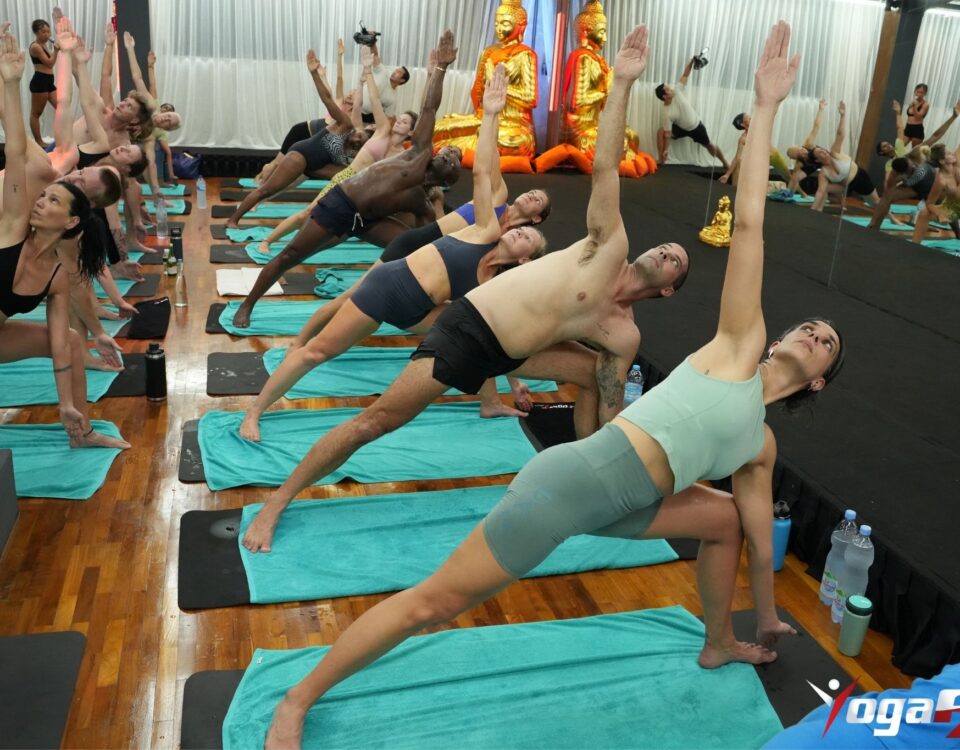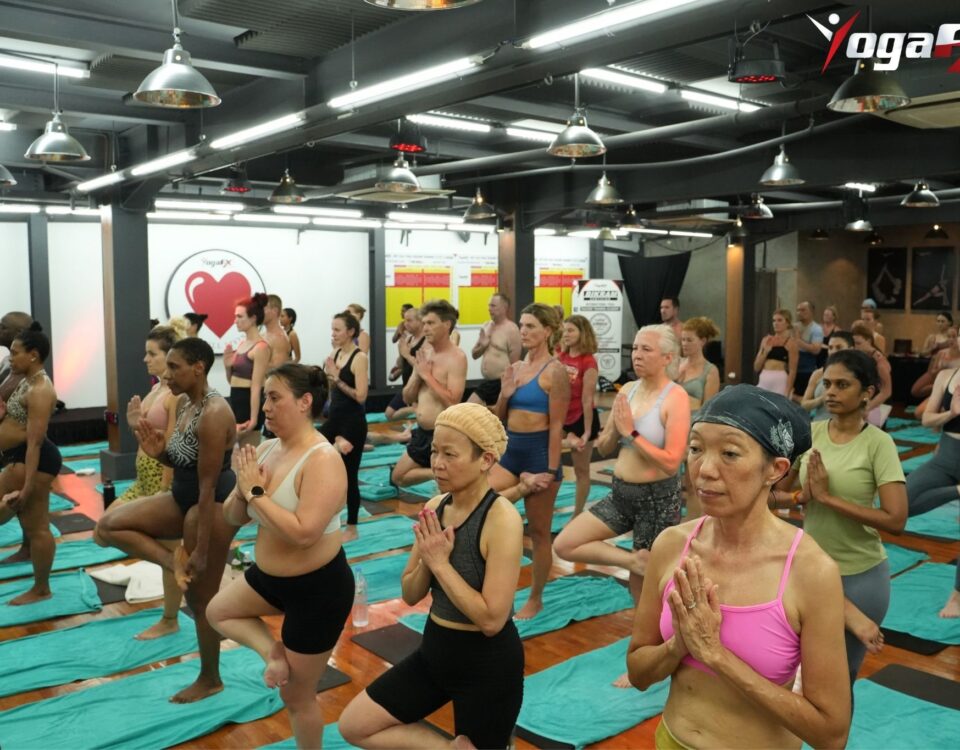
Are you ready to sweat it out and find your zen? Hot yoga asana might just be what you need! Whether you’re a seasoned yogi or a complete newbie, diving into a hot yoga class can be both challenging and incredibly rewarding. Let’s break down what hot yoga asana is all about, explore a 26-posture sequence inspired by Bikram Yoga, and give you the lowdown on how to get started. Grab your yoga mat, and let’s get into it!
What is Hot Yoga Asana?
Hot yoga asana is a form of yoga performed in a heated room, typically between 90°F to 105°F (32°C to 40°C). The high temperature helps to warm up your muscles, making them more flexible and reducing the risk of injury. Plus, sweating it out in a hot room can help detoxify your body and improve circulation.
But it’s not just about the heat. Hot yoga asana combines a series of yoga postures (asanas) and breathing exercises designed to work every part of your body. Each class usually follows a specific sequence, with Bikram Yoga being one of the most popular styles. Bikram Yoga consists of 26 postures and two breathing exercises, all performed in a heated environment. This sequence is carefully crafted to systematically move fresh, oxygenated blood to every organ and fiber of your body, helping to restore all systems to healthy working order.
Hot yoga asana is perfect for those who love a good challenge and want to see real progress in their flexibility, strength, and overall fitness. Plus, the heated environment can make your practice more intense, helping you build mental resilience and focus.
26 Hot Yoga Asana Sequence
Ready to dive into a full-on hot yoga asana sequence? Here’s a breakdown of the 26 postures inspired by Bikram Yoga that you can incorporate into your practice. Remember to listen to your body, stay hydrated, and enjoy the journey!
Starting with Standing Deep Breathing
We kick things off with Standing Deep Breathing, also known as Pranayama. This is where you stand tall with your feet together and your hands by your sides. You take deep breaths in through your nose, raising your arms overhead, and then exhale forcefully, lowering your arms. This breathing exercise warms up your body and mind, preparing you for the intense session ahead.
Flowing into Half Moon Pose
Next up is the Half Moon Pose, or Ardha Chandrasana. From a standing position, you raise your arms parallel to the floor and bend forward from the hips. Whether you reach for your toes, ankles, or shins depends on how flexible you are. This pose stretches your hamstrings and warms up your spine.
Standing Bow Pose Brings Strength
Then comes the Standing Bow Pose, or Dhanurasana in Tadasana. You start by bending your knees slightly, raising your arms to parallel, and kicking your heels back while keeping your thighs parallel. This stretch targets your legs and back, giving you a powerful boost of energy.
Balancing Stick Pose for Stability
Balancing Stick Pose, Tuladandasana, challenges your balance and core strength. You shift your weight onto one foot, lifting the other leg straight out in front while extending your arms forward. Holding this pose on each side helps improve your balance and focus.
Stretching in Standing Separate Leg Stretching Pose
In Standing Separate Leg Stretching Pose, or Dandayamana Bibhaktapada Paschimottanasana, you stand with your feet wide apart and reach towards each foot from opposite hands. This deep stretch targets your hamstrings and groin, enhancing your flexibility.
Triangular Pose Opens Up Your Side
Triangle Pose, or Trikonasana, is all about opening up your sides and improving your balance. With one foot turned out 90 degrees and arms extended to the sides, you bend at your hip to reach one hand towards your shin or the floor while the other arm stretches towards the ceiling. This pose strengthens your legs and stretches your torso.
Standing Separate Leg Head to Knee Pose Deepens the Stretch
Standing Separate Leg Head to Knee Pose, Dandayamana Bibhaktapada Janushirasana, is similar to Triangle Pose but focuses more on stretching the hamstrings and improving your balance. You bend forward from the hips, bringing one hand to your ankle and the other arm towards the ceiling, holding each side to deepen the stretch.
Tree Pose Brings Balance and Focus
Tree Pose, or Tadasana, helps you find balance and concentration. Standing on one foot, you place the other foot on your inner thigh or calf and bring your hands to prayer position or overhead. This pose strengthens your legs and improves your focus.
Toe Stand Pose Challenges Your Balance
Toe Stand Pose, Padangustasana, takes your balance skills to the next level. From Tree Pose, you lower your raised foot and try to touch your toes with your hands while maintaining your balance. It’s a great way to build strength in your legs and improve coordination.
Dead Body Pose for Relaxation
Dead Body Pose, Savasana, is all about relaxation. You lie flat on your back with arms by your sides, close your eyes, and breathe deeply. This pose helps your body absorb the benefits of your practice and calms your mind.
Wind Removing Pose I Clears Your System
Wind Removing Pose I, Pavanamuktasana, involves lying on your back, hugging your knees to your chest, and gently rocking side to side. This pose massages your lower back and helps release any trapped wind or tension in your body.
Wind Removing Pose II Enhances Flexibility
Wind Removing Pose II builds on the first wind-removing pose by extending your arms out and gently pulling your knees towards each shoulder. This variation deepens the stretch and enhances your flexibility.
Shoulder Bridge Pose Strengthens Your Back
Shoulder Bridge Pose, Setu Bandha Sarvangasana, has you lying on your back with knees bent and feet flat on the floor. You lift your hips towards the ceiling, keeping your shoulders and arms on the floor. This pose strengthens your back, glutes, and legs while opening up your chest.
Locust Pose Builds Back Strength
In Locust Pose, Salabhasana, you lie on your stomach with arms alongside your body and lift your head, chest, arms, and legs off the floor. This powerful pose strengthens your back muscles and improves posture.
Raised Body Pose Intensifies the Stretch
Raised Body Pose, Urdhva Dhanurasana, takes Locust Pose up a notch by lifting your chest, arms, and legs even higher. This deeper stretch targets your back and chest, enhancing your overall strength and flexibility.
Hand to Foot Pose Targets Your Hamstrings
Hand to Foot Pose, Hasta Padasana, involves lying on your back with legs extended and then bending forward from the hips to reach for your toes. This pose deeply stretches your hamstrings and lower back, improving flexibility.
Camel Pose Opens Up Your Front Body
Camel Pose, Ustrasana, has you kneeling with knees hip-width apart and reaching back to grab your heels while lifting your chest. This backbend stretches your front body, including your chest, abdomen, and thighs, and improves spinal flexibility.
Rabbit Pose Relieves Tension in Your Back
From Camel Pose, you transition into Rabbit Pose, Sasangasana, by tucking your chin to your chest and rounding your spine, bringing your head towards your knees. This pose massages your spine and releases tension in your back.
Head to Knee Pose II Deepens the Forward Bend
Head to Knee Pose II, Janushirasana, is a seated forward bend where you extend one leg and bend the other, reaching for your foot. This pose deepens the stretch in your hamstrings and enhances your balance and concentration.
Spine Twisting Pose Adds a Twist
Spine Twisting Pose, Ardha Matsyendrasana, involves sitting with one leg bent and the other extended, then twisting your torso towards the bent leg. This twist improves spinal flexibility and aids in digestion by massaging your internal organs.
Blowing in Firmament Pose Energizes You
Blowing in Firmament Pose, Kapalbhati in Tadasana, is a breathing exercise where you stand tall and perform forceful exhalations while pulling your belly in. This energizes your body and clears your mind, preparing you for the rest of your practice.
Kneeling Head to Knee Pose Enhances Flexibility
Kneeling Head to Knee Pose, Janu Sirsasana in Vajrasana, has you kneeling with one leg extended in front while bending forward to reach your foot. This pose stretches your hamstrings and lower back, improving flexibility and balance.
Prayer Pose Brings Calm and Focus
Prayer Pose, Pranayamasana, involves sitting cross-legged with hands in prayer position at your chest. You focus on your breath, calming your mind and relaxing your body. This pose sets a peaceful tone for your practice.
Full Locust Pose Strengthens Your Entire Body
Full Locust Pose, Poorna Salabhasana, is an advanced version of Locust Pose where you lift your arms, chest, and legs as high as possible. This intense pose strengthens your back, glutes, and legs while improving your posture.
Bow Pose Opens Your Front Body Even More
Bow Pose, Dhanurasana, has you lying on your stomach, bending your knees to grab your ankles, and lifting your thighs and chest off the floor. This deep backbend stretches your entire front body and enhances spinal flexibility.
Fixed Firm Pose for Final Relaxation
We wrap up the sequence with Fixed Firm Pose, Supta Vajrasana, where you lie on your back with legs extended and arms by your sides. This final relaxation helps your body absorb all the benefits of your practice, leaving you feeling calm and refreshed.
Learn Hot Yoga Asana
Starting hot yoga asana is a powerful way to transform your body and mind. Find a supportive studio with certified instructors to feel comfortable and guided. Staying hydrated is key; drink water before, during, and after class, and eat a light snack an hour beforehand, like fruit or a smoothie, for energy.
Dress comfortably in breathable, moisture-wicking clothes, and bring a non-slip mat or towel. Listen to your body—pace yourself, modify poses if needed, and remember that yoga is about personal growth, not comparison. Focus on deep, steady breathing to stay calm, and aim for regular practice to see improvements in flexibility and strength.
Embrace the heat; it helps muscles stretch deeply and safely. After class, relax in Savasana to let the benefits settle. Connecting with fellow yogis can make your journey even more enjoyable. Celebrate each small win and keep exploring. With patience and positivity, hot yoga can bring balance, strength, and peace into your life.


